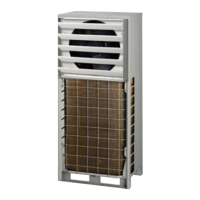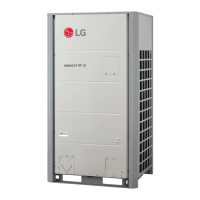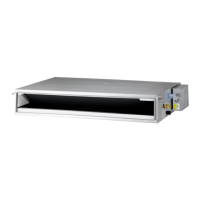GUIDELINES | 119
Application Guidelines
Due to our policy of continuous product innovation, some specications may change without notication.
© LG Electronics U.S.A., Inc., Englewood Cliffs, NJ. All rights reserved. “LG” is a registered trademark of LG Corp.
Common Indoor Unit Drainage System
It is usual work practice to connect individual indoor unit drain pipes to one common indoor unit drainage system. The diameter of the com-
mon vertical drain pipe must be as large as necessary. The diameter of the horizontal pipe must be the same or larger than the vertical drain
pipe. To avoid property damage in the event of the primary drain becoming clogged, and to optimize drain system performance, it may be
prudent to install a secondary drain line. Design the drain system to plan for winter operation (condensate line may freeze up if condensate
does not properly drain away). Drain all generated condensate from the external condensate pan to an appropriate area. Install a trap in the
condensate lines as near to the indoor unit coil as possible. To prevent overflow, the outlet of each trap must be positioned below its connec-
tion to the condensate pan. All traps must be primed, insulated, and leak tested if located above an inhabited space.
Figure 50: Example of a Common Indoor Unit Drainage System.
APPLICATION GUIDELINES
General Drain Piping Information
Common horizontal drain pipe
1/50 to 1/100 Slope
27-1/2 in.
(Maximum pump
lift distance
[depends on indoor
unit type]).
Include trap
at the end.
45° to 60° Angle
Position the vent
down to prevent
debris from entering
the system
45° to 60° Angle
45° to 60° Angle
45° to 60° angle for protection against overflow
Common
vertical
drain pipe
• It is recommended that a dedicated drain pipe be installed for the air conditioning
system. If the indoor unit drainage system is shared with a rainwater drain, waste
water, or any other type of building drain system, back flow, leaks, ice may form, or
noxious odors may infiltrate the air conditioning system.
• Install a trap if the drain access to the outside faces an undesirable location (i.e.,
sewer), otherwise, noxious odors may infiltrate the air conditioning system.

